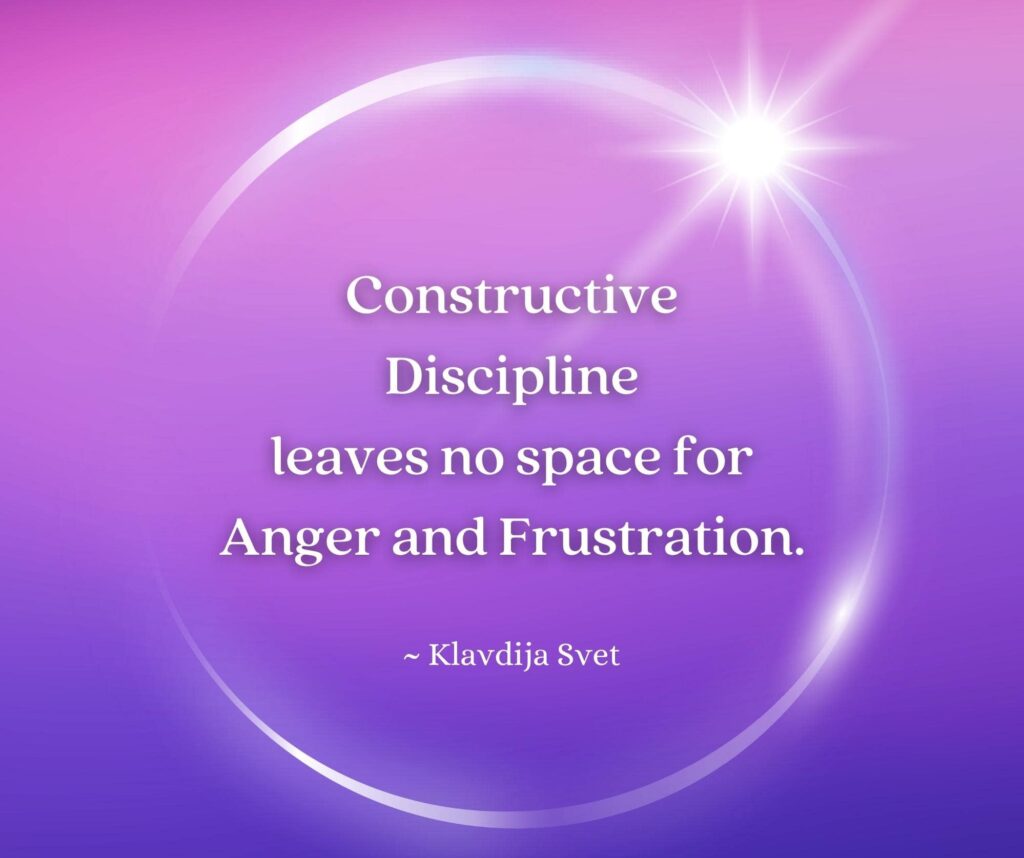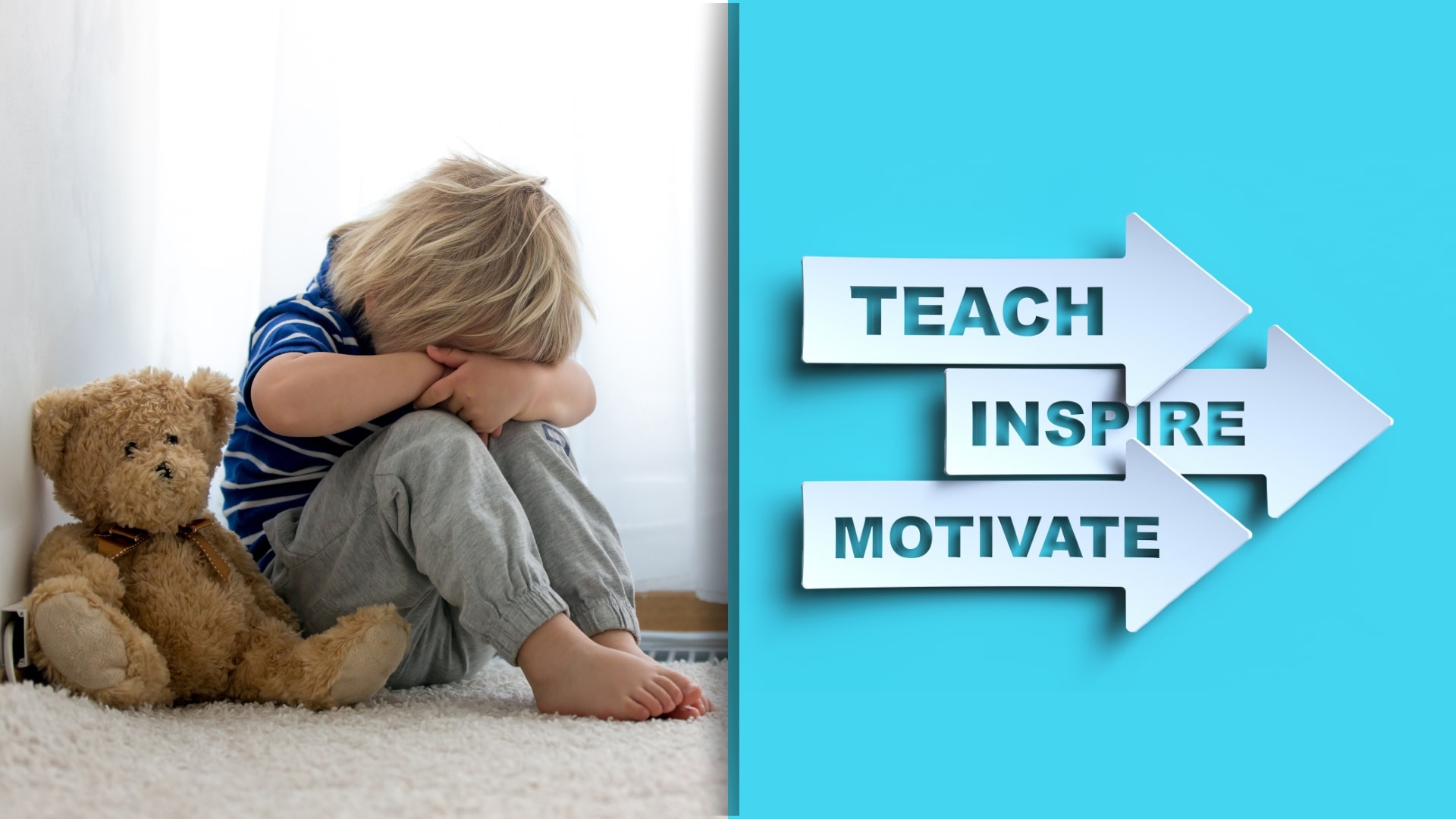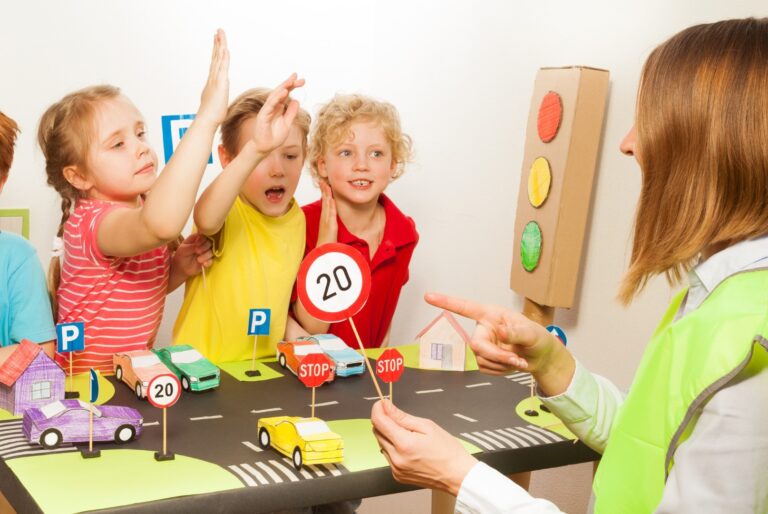Constructive Discipline
The Secrets to Effective Discipline

Discipline should be viewed as an opportunity to educate and guide rather than punish. It is essential to recognize that a disciplined individual is someone who is being taught valuable lessons and given the tools to improve their behavior and understanding. By shifting our perspective from seeing discipline as a means for punishment to that of a constructive learning process, we can foster growth and development in students, empowering them to make better choices in the future.
When teachers approach discipline with a positive and constructive mindset, it has a significant impact on the outcome and can greatly influence children in a positive way. Shifting the focus from punishment to teaching allows for a more empathetic and understanding approach, which helps build trust and rapport between teachers and students. This emotional shift in teachers creates a supportive and nurturing environment where students feel valued and understood, enhancing their motivation to learn and grow. It also fosters a sense of belonging and encourages open communication, enabling students to express themselves and address any underlying issues that may be causing disruptive behavior.
Teaching discipline in a positive and constructive mindset does not mean that children won’t experience consequences for their actions. Consequences are an important part of the learning process and can help children understand the impact of their choices. However, the key difference lies in how those consequences are implemented and communicated.
In a positive and constructive approach to discipline, the focus is on teaching children the cause-and-effect relationship between their behavior and the outcomes that follow. Consequences are designed to be educational rather than punitive. They should be proportionate to the situation, related to the behavior in question, and provide an opportunity for reflection and growth.
By using consequences as teaching tools, children can develop a deeper understanding of their actions, take responsibility for their behavior, and learn to make better choices in the future. The emphasis is on helping children learn from their mistakes and develop essential life skills such as empathy, problem-solving, and self-control.
A positive and constructive approach to discipline acknowledges the importance of consequences but ensures they are delivered in a supportive and educational manner, promoting the child’s personal growth and development.

Example of constructive approach to discipline
Here’s an example of how an early childhood educator might apply a positive and constructive approach to discipline:
Let’s say a child consistently struggles with sharing toys during playtime. Instead of immediately resorting to punishment or scolding, the educator takes a proactive and teaching-oriented approach. Here is how:
- Setting Clear Expectations
The educator establishes clear guidelines for sharing and communicates them to the children in a positive and understandable manner. For example, they might say, “In our classroom, we take turns and share toys so that everyone can have a chance to play and have fun.” - Modeling Behavior
The educator demonstrates positive behavior by role-playing sharing scenarios with the children. They showcase how to ask for a turn, patiently wait, and express gratitude when sharing occurs. - Reinforcing Positive Actions
When a child successfully shares a toy or takes turns, the educator praises and acknowledges their efforts, highlighting the positive behavior. For example, they might say, “Great job, Sarah! You shared the ball with your friend. That was very kind of you!” - Guided Discussions
If conflicts arise during playtime, the educator facilitates age-appropriate discussions to address the situation. They encourage children to express their feelings and perspective, guiding them towards understanding the impact of their actions on others. For example, they might ask, “How did it feel when Johnny didn’t share the toy with you? What could we do to solve this problem and make everyone happy?” - Problem-Solving Strategies
The educator teaches problem-solving strategies, such as using words to express needs, suggesting alternatives, or finding compromises. They encourage children to brainstorm solutions together, fostering critical thinking and empathy. - Reflective Time
If the behavior persists, the educator provides the child with a reflective break, where they can calm down and think about their actions. During this time, the child can also receive gentle guidance and support from the educator to understand the consequences of their behavior.
By consistently applying this positive and constructive approach, the educator helps the child develop a better understanding of sharing, empathy towards others, and problem-solving skills. The focus is on teaching and guiding the child towards positive behavior rather than using punishment as the primary method of discipline.
Benefits of Constructive Discipline
1. Positive Behavior Development
Constructive discipline focuses on teaching children appropriate behaviors rather than solely punishing them for their mistakes. This approach helps children understand the expectations, learn social skills, and develop positive behavior patterns.
2. Emotional Intelligence
By using constructive discipline methods, educators can help children recognize and regulate their emotions effectively. It promotes empathy, self-awareness, and emotional resilience, which are crucial aspects of emotional intelligence.
3. Problem-Solving Skills
Constructive discipline encourages children to think critically, analyze situations, and find solutions to conflicts. They learn to consider alternatives, negotiate, and make decisions independently, fostering their problem-solving abilities.
4. Self-Control and Self-Discipline
Through constructive discipline, children learn self-control and self-discipline as they understand the consequences of their actions and make choices accordingly. They develop a sense of responsibility and learn to manage their behaviors and impulses.
5. Healthy Relationships
Constructive discipline emphasizes building positive relationships between children and educators. It creates an atmosphere of trust, respect, and understanding, leading to stronger teacher-student bonds and healthier peer interactions.
6. Enhanced Learning Motivation
When children experience constructive discipline, they feel valued and understood. This positive environment enhances their motivation to learn, explore, and actively engage in educational activities.
7. Social Skills Development
Constructive discipline provides opportunities for children to interact with their peers, express themselves, and learn appropriate social skills. They develop effective communication, cooperation, and empathy, which are vital for successful social interactions.
8. Long-Term Behavior Change
Unlike punitive discipline methods, constructive discipline focuses on teaching and guiding children rather than merely suppressing unwanted behaviors. This approach promotes lasting behavior change as children understand the reasons behind their actions and actively work towards positive alternatives.
The emotional shift in teachers from Punishing to Teaching creates a big difference in the outcome and positively influences children.

Elevate your teaching skills and stay ahead of the curve! Receive our monthly Insights, packed with professional development opportunities, classroom inspiration, and the latest trends in education. Don’t miss out on the chance to take your teaching to the next level. Subscribe now!







